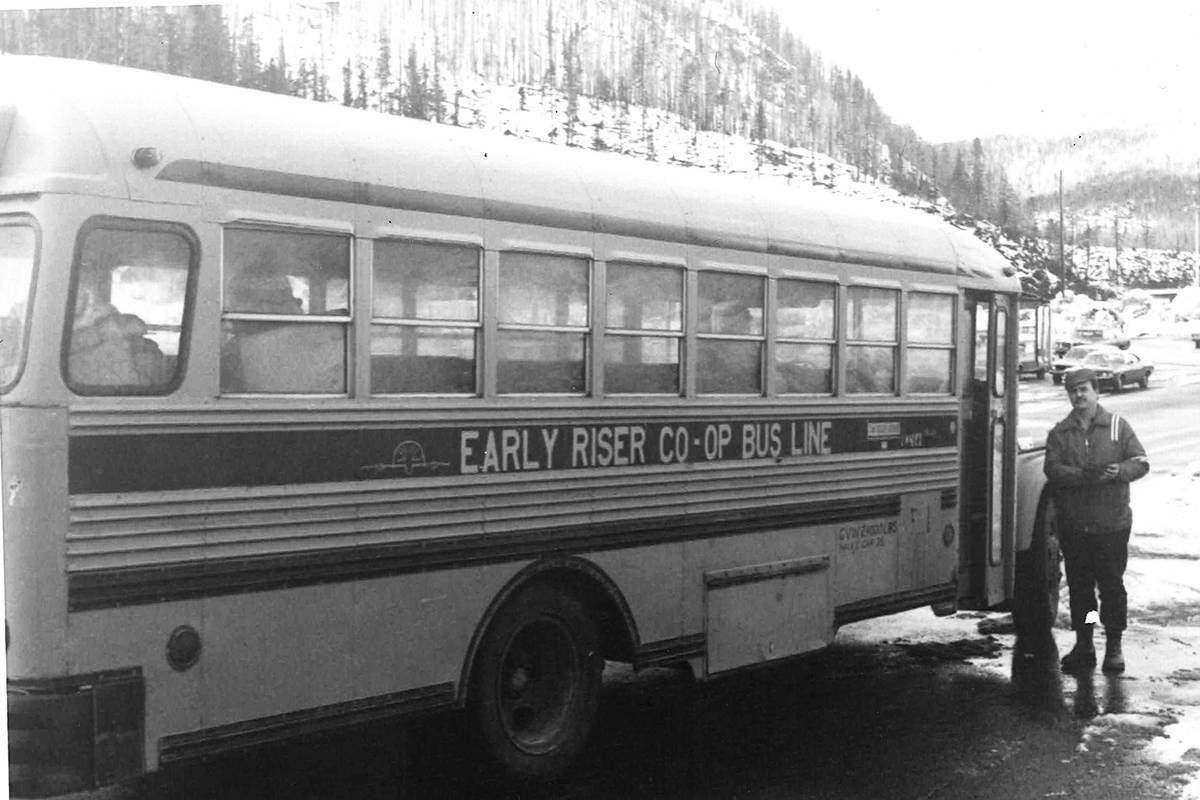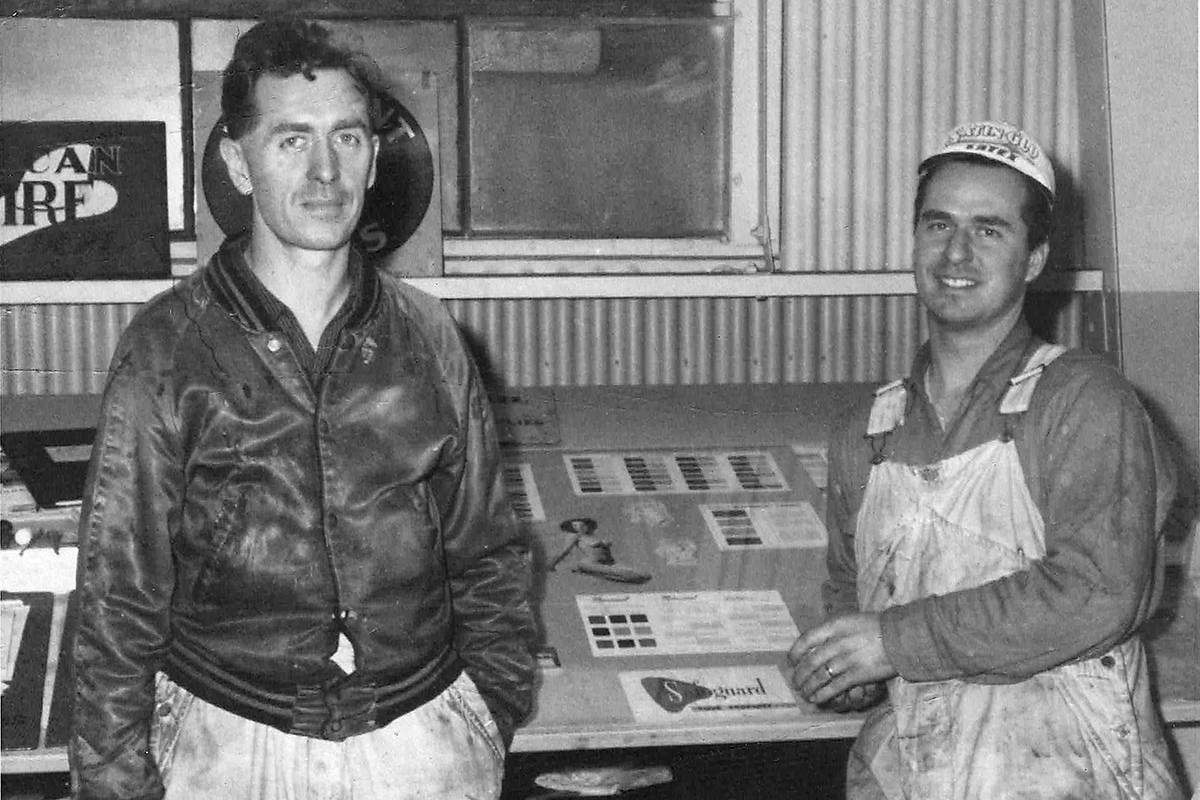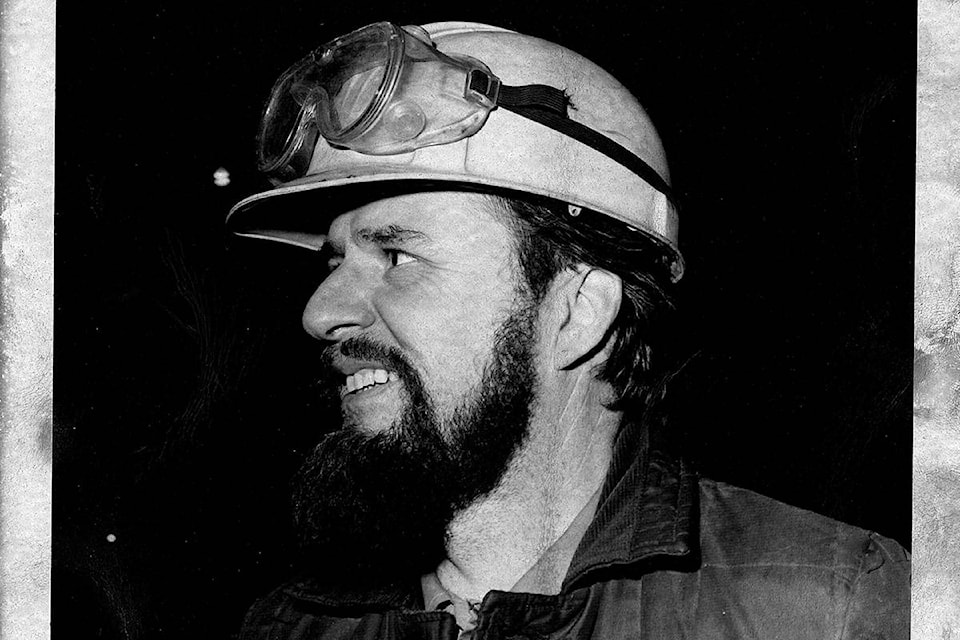In 1954 Alan McGowan left his new bride Mary in Vancouver, hopped onto a floatplane and made the bumpy 12-hour flight to Kitimat to work as a painter on the nearly-completed Alcan aluminum smelter.
His and Mary’s life changed from that moment onwards, their three-decade-long life in both Kitimat and Terrace now documented in his memoirs titled Thinking Outside the Box, his second and final book of memoirs released before he passed away in May this year at the age of 89.
Alan’s first set of memoirs, Riding in Style - the First Twenty-Five Years, documented his life growing up poor, working all over B.C. during the Depression and riding his old Harley motorcycle to California at the age of 15.
In Thinking Outside the Box Alan, a natural storyteller, paints a fascinating picture of life during this period of Northwest B.C. history, from the chaos that ensued as more than a thousand men arrived in Kitimat creating an ‘instant town,’ to when he worked with his colleagues to figure out how to smelt aluminium more efficiently and cleanly.
Alan had a sharp eye for detail and wrote about women and men of all shapes, sizes and backgrounds who arrived in Kitimat during that time.
“Others were on the run from trouble in their home country, some who went ‘bunkhouse happy’ after too long in the bush, and always those working the angles to get something for nothing from the company,” reads the blurb on the back of the book.
In one passage, Alan describes what it was like to see a multiplicity of nationalities thrown together at Alcan when he first arrived.
In the early days, he writes, most of them got along and would exchange stories and experiences in the long, narrow unloader’s control room overlooking the ocean. Most of the men were veterans of the Second World War.
His daughter Sharon McGowan said her father learned the value, and the dangers, of thinking outside the box and dedicated the book to the average worker who strove to push the boundaries with the hopes of reaping enormous rewards.
“He really loved that aspect of looking at a situation and figuring out what wasn’t working, and saying ‘I can fix that’,” said Sharon, who now lives in Vancouver.
“The book really celebrates that, not just with him but with all the people he met, all the different ways people would approach solving problems in really unexpected ways.”
He wrote about one man he calls Bill who survived the bombing of Dresden and had experience fixing generators in Germany. Despite his experience, when the generator at the plant’s power station at Kemano began dangerously fluctuating, “no one believed he could do it.”
His persistence paid off, however – Bill was finally allowed to go to Kemano and soon had the generator back up and running smoothly.
“He celebrates that innovative and inventive spirit of the average person, but also particularly people in the northwest,” said Sharon.
“He wanted to do this as an inspiration, and he thought this would help inspire other people. And for me, it was a way of commemorating these extraordinary people and stories of when I was growing up.”
Alan’s inventive spirit didn’t stop at the smelter — Sharon says everything at her father’s house came with some sort of improvement, right down to the lawn chairs.
Writing his stories was difficult for him, so 15 years ago when writing his first set of memoirs he invented a system where he could record his stories orally on audiotape, then plug it into a program to transcribe it so his writing sounded more like a conversation than written prose, she said.
“The really wonderful thing for me was after he passed away was finding those tapes in the basement with the tape recorder.”
In one of the last chapters of Thinking Outside the Box, Alan writes about his invention of the Curlstick, a simple cane-like device that allows those with bad backs and bad knees to curl while standing up. The Curlstick is now used all over the world and was commemorated on the Winter Paralympics 2010 coin.
Sharon said Alan always believed it was his duty to preserve his stories, and the stories of people he met, to commemorate a former way of life.
“It’s been an incredible thing for me because all these people I haven’t heard from in 50 years are connecting with me again, – it’s just wonderful,” said Sharon. “It’s been a real gift.”
To win a copy of Thinking Outside The Box courtesy of the Northern Sentinel, simply send us an email with the answer to the question below, along with your name, address and cell number.
Alternatively, drop off your entry at our offices at 626 Enterprise Ave. in the Service Centre, before November 15, at 5 p.m. Our office hours are 8:30 a.m. to noon, 1 p.m. to 5 p.m.
QUESTION: What piece of sporting equipment is Alan McGowan credited with having invented?



